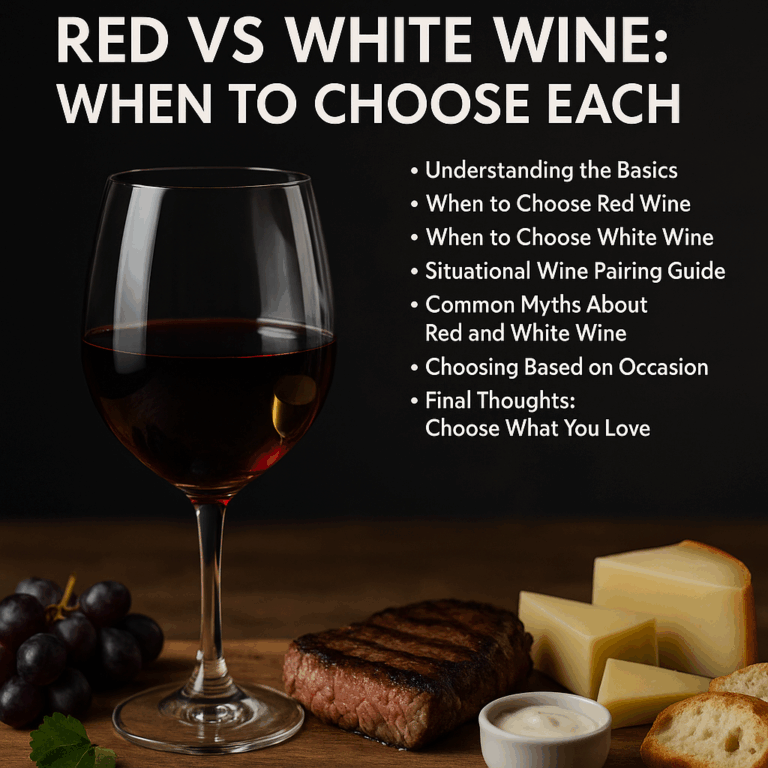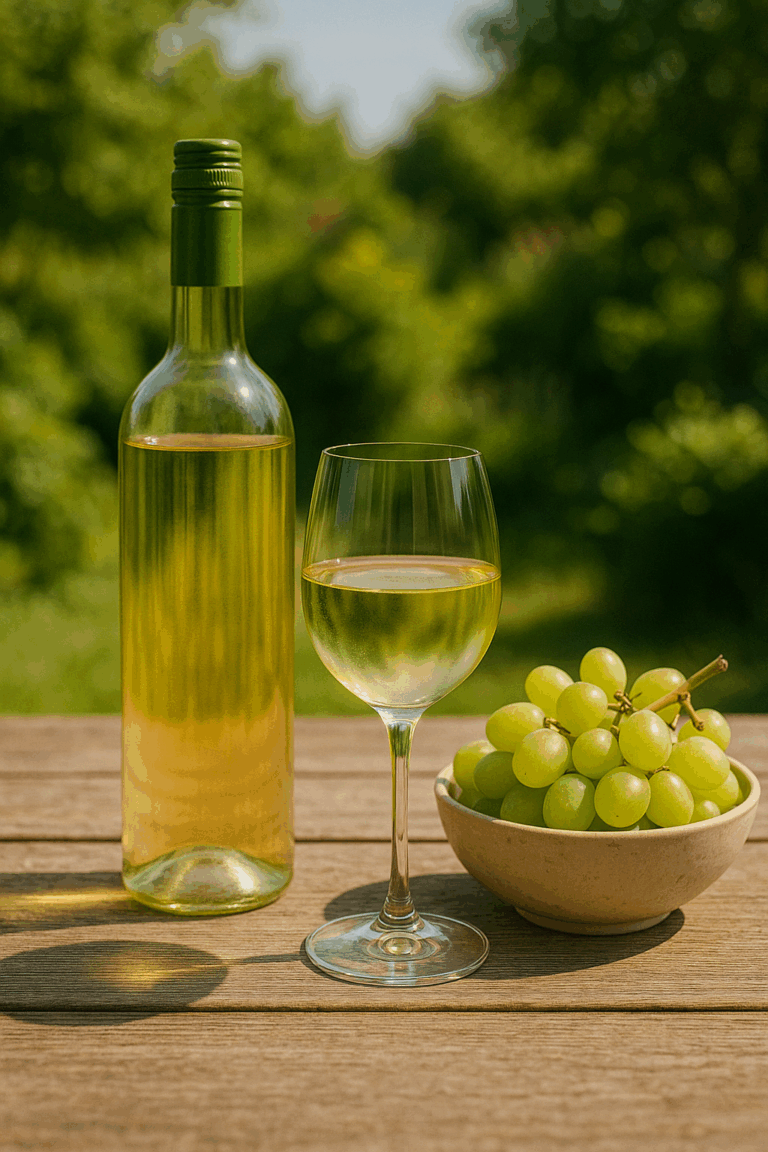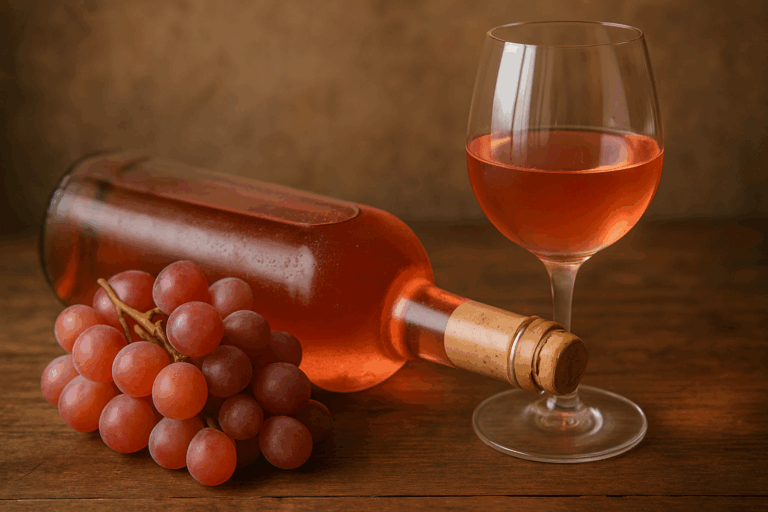How to Match Wine with Dessert Without Ruining the Flavor
Pairing wine with dessert might seem like a natural match after all, both are indulgent and celebratory. But in practice, it’s one of the trickiest pairings to get right. The wrong wine can make your dessert taste dull or sour, and the wrong dessert can make even a great wine taste bitter or flat.
In this guide, you’ll learn the key principles of pairing wine with dessert, classic combinations that work, and common mistakes to avoid.
Why Dessert Pairings Are Different
Desserts are almost always sweet, and sweetness in food can drastically alter how wine tastes. If the wine is less sweet than the dessert, it may taste sharp, bitter, or hollow by contrast.
That’s why one of the golden rules of wine pairing is:
The wine should be at least as sweet as (or sweeter than) the dessert.
This prevents the wine from being overwhelmed and allows both elements to shine together.
Key Principles for Pairing Wine with Dessert
1. Match Sweetness Level
As mentioned, the wine must meet or exceed the dessert’s sweetness. For example, a dry wine with chocolate cake is almost always a bad match.
2. Consider Weight and Intensity
Lighter wines go with lighter desserts; rich wines go with decadent dishes. Balance is essential.
- Light dessert = Light, sweet wine (e.g., fruit tart with Moscato)
- Rich dessert = Fuller, fortified wine (e.g., chocolate cake with Port)
3. Match or Complement Flavors
Pair by harmony or contrast:
- Peach cobbler + peachy or honeyed wine like Sauternes
- Lemon tart + floral and zesty wine like late-harvest Riesling
- Dark chocolate + berry-driven wine like Banyuls or Ruby Port
4. Consider Acidity
Some desserts have tart elements (e.g., berries, citrus). Match them with wines that also have bright acidity, so the pairing feels fresh instead of cloying.
Great Dessert Wines and What They Pair With
Moscato d’Asti
- Sweetness: Light and sweet
- Flavors: Peach, orange blossom, honeysuckle
- Pairs With: Fruit salads, meringues, sponge cakes, panna cotta
Sauternes
- Sweetness: Rich and honeyed
- Flavors: Apricot, honey, marmalade, toasted almond
- Pairs With: Crème brûlée, tarte Tatin, peach cobbler, blue cheese
Port (Ruby or Tawny)
- Sweetness: Deep and intense
- Flavors: Dried fruits, nuts, chocolate, spices
- Pairs With: Chocolate cake, nut tarts, aged cheeses, truffles
Late Harvest Riesling
- Sweetness: Ranges from medium to very sweet
- Flavors: Apple, honey, lemon, stone fruits
- Pairs With: Cheesecake, apple pie, lemon bars
Banyuls (France)
- Sweetness: Fortified, rich
- Flavors: Black cherry, fig, cocoa
- Pairs With: Dark chocolate desserts, flourless chocolate cake
Ice Wine (Eiswein)
- Sweetness: Very sweet, high acidity
- Flavors: Tropical fruits, apricot, pineapple
- Pairs With: Fruit tarts, cream-based desserts, cheesecake
Dessert and Wine Pairing Examples
| Dessert | Wine Pairing | Why It Works |
|---|---|---|
| Chocolate lava cake | Ruby Port or Banyuls | Rich, fruity wines match chocolate intensity |
| Lemon tart | Late Harvest Riesling | Sweet and acidic — brightens citrus flavors |
| Fresh berries and cream | Moscato d’Asti | Light and floral, doesn’t overpower the fruit |
| Cheesecake with berries | Ice Wine or Sauternes | Rich texture and balance of acidity and sweetness |
| Apple pie with cinnamon | Tawny Port | Nutty flavors in the wine echo the warm spices |
Mistakes to Avoid
- Avoid dry wine with sweet dessert — it will taste overly sour.
- Avoid red table wine with chocolate — most reds are too tannic and clash with cocoa.
- Avoid low-acid wines with acidic desserts — they’ll taste flat and overly sugary.
- Avoid oversweet pairings — too much sugar in both wine and dessert can overwhelm your palate.
Non-Traditional Pairings That Work
- Dark chocolate with zinfandel (if the wine is jammy and low in tannin)
- Blue cheese with Sauternes (salty-sweet contrast)
- Pumpkin pie with late-harvest Gewürztraminer (spice and richness balance)
Serving Tips
- Serve dessert wines slightly chilled (45–55°F / 7–13°C)
- A small glass is enough — dessert wines are usually higher in alcohol
- Use tulip-shaped glasses to focus aroma and sweetness
- Pour about half the usual serving — these are meant to be sipped slowly
A Sweet Ending
Pairing wine with dessert is about balance, intention, and experimentation. When done right, it can elevate both the dish and the drink into something extraordinary. Start with a few of the classic pairings above, then explore based on your personal preferences and dessert favorites.
With a little knowledge and a lot of tasting, you’ll soon discover the joy of ending a meal with a perfectly matched sip.






